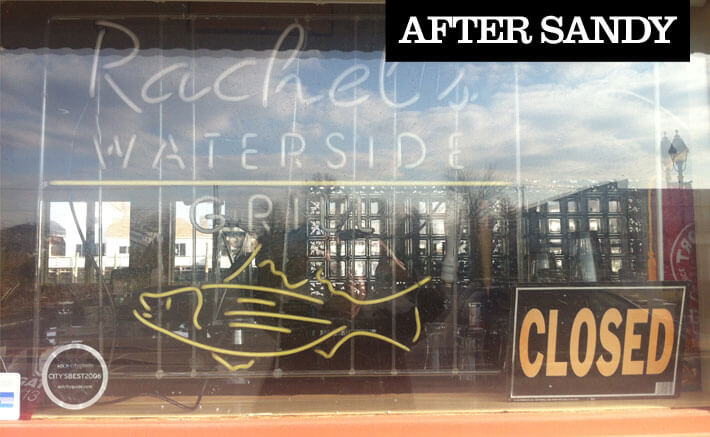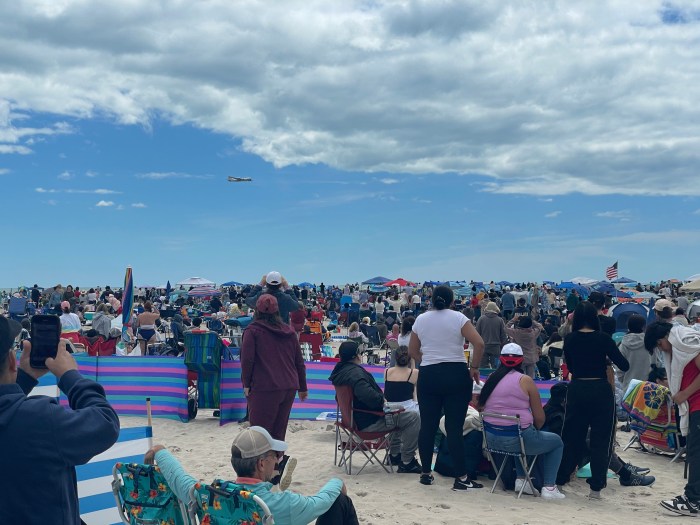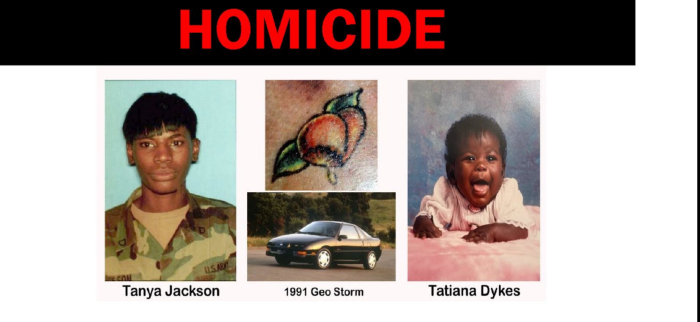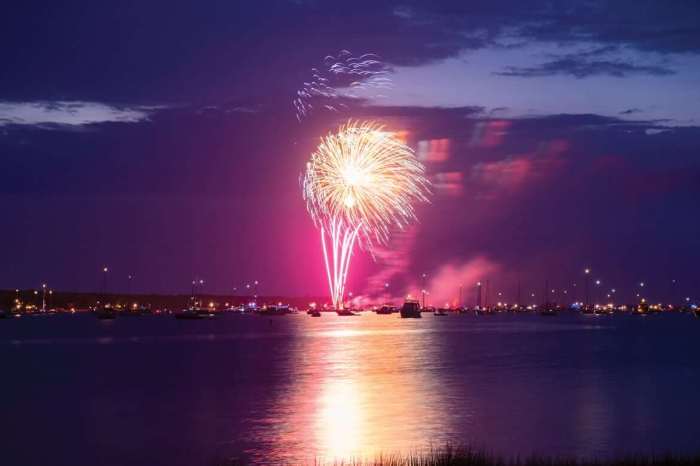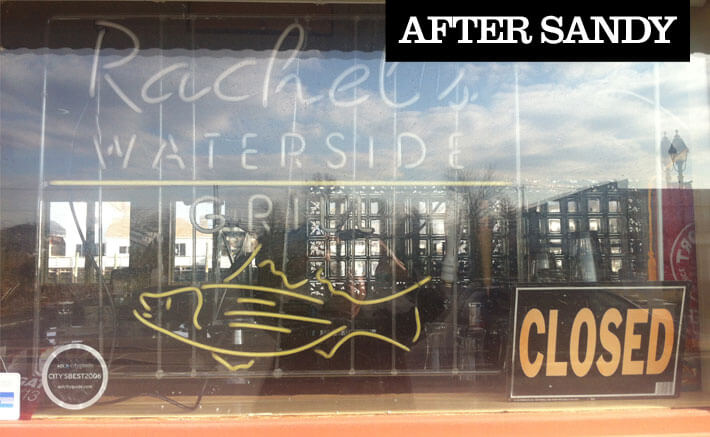
Ivan Sayles, owner of the popular waterfront restaurant Rachel’s Waterside Grill on Freeport’s Nautical Mile, waded through knee-deep water the day after Superstorm Sandy, the stench of gasoline burning his nose as his eyes focused on dozens of fishing boats collapsed like dominos at a nearby boatyard.
The 46-year-old business owner from Seaford Harbor trekked on, consumed with anticipation, wondering what—if anything—of his business on Woodcleft Avenue was spared by the record storm surge. But the 16-year-old restaurant, on track for windfall sales this year, was destroyed.
Chairs and tables were submerged in three feet of saltwater. Beer kegs covered the outside ramp. The deep fryer was upside-down. A refrigerator under the bar had popped like a cork, crookedly lifting up the bar top. Nearby, a blaze gutted a new club, Tropix, along with a neighboring fish shop.
“There wasn’t one business that wasn’t affected,” Sayles says, adding that only one eatery was open on the Mile a month after Sandy ravaged the stretch of bars, restaurants, seafood markets, marinas and gift shops.
The Nautical Mile has become a virtual ghost town, the usually bustling streets deserted as surrounding residents and shopkeepers continue to dig out of the wreckage. It’s a scene that’s playing out all across Long Island’s waterfront commercial districts—but Sandy didn’t impact all businesses the same.
Many summer-oriented establishments, like Rachel’s, aim to be back by spring. Some retailers have sprung back to life just in time for the holiday shopping season. Others, already struggling to recover from the recession, may be gone forever. Meanwhile the trades and hotels are reportedly working overtime—there’s much to rebuild and out-of-towners aplenty here to help.
The Oct. 29 superstorm is estimated to rank second costliest to Katrina, with $63 billion in damage and economic loss across nearly half the nation. Gov. Andrew Cuomo is requesting $33 billion in repair reimbursements, including $8 billion for LI, plus $9 billion more for preventative storm hardening—all while President Obama and Congress are facing a fiscal cliff.
“The storm occurred at the worst possible time,” says Pearl Kamer, chief economist for the Long Island Association, noting the full local impact won’t be known until next year. “We are just beginning to emerge from a particularly bad recession.”
But if history is any guide, recovery efforts during the last storm of the century to hit the region—the 1938 Long Island Express—helped LI shake off the Great Depression before World War II galvanized the economy.
History may be repeating itself. Several business owners told the Press they’ve become closer with neighboring shopkeepers and competitors after the storm. Loyal patrons are also showing support for local businesses.
“I think it’s going to be okay,” says Lawrence Kushnick, vice chairman of the Huntington Township Chamber of Commerce. “If anything, I think people are bonding and uniting and shopping a little more than before Sandy.”
CLOSING TIME
Instead of seeing a Black Friday spike in sales, storeowners in the badly battered City of Long Beach got a visit from New York State officials touring Park Avenue shops to offer low-interest business loans for Sandy survivors.
The loans—up to $25,000—are through the recently created state Small Business Emergency Loan Fund, which come in addition to federal Small Business Administration lending being offered.
“We want this thing to work quickly for people,” says Empire State Development CEO and President Kenneth Adams after visiting the struggling shops in the City by the Sea.
The loans have to be paid back, unlike the $282 million in disaster aid approved for individuals on LI as of Nov. 27 through the Federal Emergency Management Agency. The SBA approved another $39 million in disaster loans and the state said 50 businesses have applied for loans so far.
Some businesses can’t add to the debt they’re already in and had to take a pass. But that doesn’t always mean they’re down and out.
“We put so much money into this space that we can’t afford to abandon it,” says Evan Klein, co-founder of Barrier Brewing in Oceanside, which lost most of its inventory and equipment to 4-foot floodwaters. “A lot of people were kinda surprised and shocked that we were rebuilding.”
The Long Beach resident said he was glad for the FEMA aid with his home, but when it comes to getting his artisanal brewery back in business next month, he got by with a little help from his friends.
The dozen-plus other local microbreweries on LI held a fundraiser for Barrier over Thanksgiving weekend. Brewers island-wide are also collaborating on a special beer with all the proceeds going toward Barrier’s comeback.
Not all are as lucky to have such supportive competitors.
“We have to assume that some small businesses will simply go out of business,” says the LIA’s Kamer.
RIPPLE EFFECT
Even if a local business doesn’t go belly-up, being shuttered for months can have an impact on the economy by increasing joblessness and decreasing sales tax income cash-strapped counties rely on, for example.
Small businesses with fewer than 20 employees make up 90 percent of LI’s economy, Kamer says. Although there are no definitive statistics for how many LI businesses remain closed as a result of the storm, anecdotal evidence suggests the closures—many of them restaurants—impact other businesses.
“Do not underestimate the value of a restaurant and their impact on the economy,” says Mario Saccente of the New York State Restaurant Association’s LI chapter, calling for more government assistance for his members.
“The ripple effect of it is tremendous.”
He says each of his 500 member restaurants in Nassau and Suffolk counties—family eateries, not chain restaurants—do business with about 30 vendors each. But during the cleanup, replacing storage equipment takes priority over ordering supplies from wholesalers.
That could force more layoffs in related businesses, Saccente says. In the broader economy, some Long Islanders in other sectors found themselves out of work after Sandy, as well.
“I lost my job because my boss couldn’t understand why I couldn’t make it in to work,” says a New York City special education teacher from Oceanside who was displaced along with her newborn baby due to the blackouts and flooding.
There was a 244,000-person spike in those receiving unemployment aid nationwide—5.2 million—in the week ended Nov. 3. Unemployment benefit applications hit an 18-month high for October. That likely reflects more folks filing after Sandy.
In New York, unemployment decreased slightly for October, partially due to seasonal hiring and power outages that prevented applicants from filing.
About 90 percent of homes and businesses served by Long Island Power Authority were blacked out after the storm. More than 1,100 on LI still needed repairs before power could be restored as of Nov. 28, including 406 in Long Beach.
Nassau County Comptroller George Maragos said Sandy caused $1 billion in economic loss to Nassau, but he was optimistic that Black Friday sales would help cushion the negative $30 million sales tax impact projected for the two weeks after the storm.
Suffolk County officials said estimates on their economic losses are still being calculated.
For many local businesses, Black Friday was a cruel joke so soon after a devastating natural disaster during a struggling economic recovery. The money is out there to be spent, experts say, but some businesses are too damaged to reopen yet or they simply don’t have the inventory to meet demand.
Instead of stocking shelves for the holidays, impacted businesses are spending much of their time waiting for insurance agents, filling out paperwork for aid and walking a tightrope toward reopening.
“There are many small businesses that are literally three, four, five weeks from going out of business anyway,” says Kushnick of the Huntington chamber. “People don’t have a tremendous amount of reserve, and they’re just hanging in there as we come out of the recession. And then they’re hit with this. It obviously wasn’t the best timing.”




